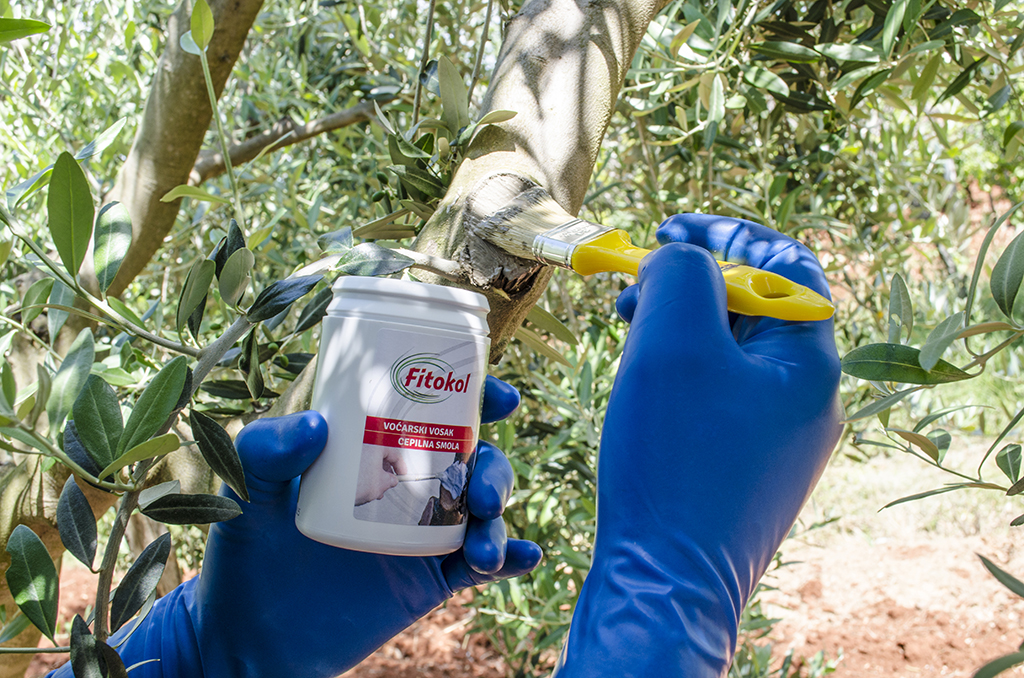
Special care and attention to olives is a matter of pride and tradition for our region. These beautiful Mediterranean trees in turn give us olive oil and the enjoyment of unique flavors. Knowing how to properly care for olive trees is important, and that includes understanding how and when to prune. During the growing period, there is pruning for formation, and later pruning for the crop. There are different ways of pruning, but they all have the same goals:
- Maintenance of regular and high yield of olives
- Shaping the canopy in such a way as to keep it breathable for the access of air and light
- Easier harvesting with greater effects
- Better drought tolerance
- Removal of dry or damaged branches
Before starting pruning, it is important to take a good look at the olive from all sides and determine the desired growing form. Pruning begins with the removal of extra thick branches, i.e. everything begins with a TICK saw and shears, and ends with FITOKOL wax for grafting.
Olive is a lush plant that loves light and warmth, so don't hesitate to prune all unproductive and bad branches.

If we want to have a healthy and fruitful olive - we must treat it with respect and respect its natural growth characteristics. Lush trees sholud be cut less, and less lush trees should be cut more. In order to achieve this, pruning must be done every year and it must always follow the physiological growth of the plant. Large cuts must be smooth and slanted to avoid water retention.
When pruning an olive tree, it is very important to choose the right time. Olive trees should be pruned in the period from the end of winter to the beginning of flowering, never at low temperatures. Cutting olive trees at the wrong time or after rain can increase the likelihood of various diseases. Smaller pruning can also be done in some other periods of the year, for example summer pruning, during which excess water bodies are removed.
Pruning olive trees is a demanding and responsible job, because fertility depends on it, so for pruning it is necessary to use the appropriate equipment for successful work: professional TICK tool - (scissors and saws) and, of course - irreplaceable FITOKOL wax for grafting. The TICK professionals tools are highest quality and designed to ensure optimum cutting with ease of use.
Experienced olive growers who know all the secrets of a rich harvest, use TICK and FITOKOL brands for proper care and pruning.
We received more useful advice from the most famous veteran of Istrian olive growing, Edi Druzetić:
It is better to invest in a quality tool and maintain it adequately than to struggle with a bad tool when pruning and risk our olives getting sick. The tool must be of good quality, cleaned, disinfected and well sharpened. Proper maintenance of tools is of great importance, especially if the tree is sick.

It is also important to treat the cut with Fitokol wax. It is applied by coating (brush) in a thin layer. After drying the wax, the treated part is completely protected. By applying wax, we help the wounds to heal faster, and we prevent the penetration of pathogenic microorganisms and the harmful effects of cold air and moisture from the environment. Larger wounds need to be coated twice (after the first layer has dried).

From processing, picking to pruning - the olive tree is the sacred tree of our region, and that's why we continue to protect it and properly care for it. This is our culture, history and tradition.






